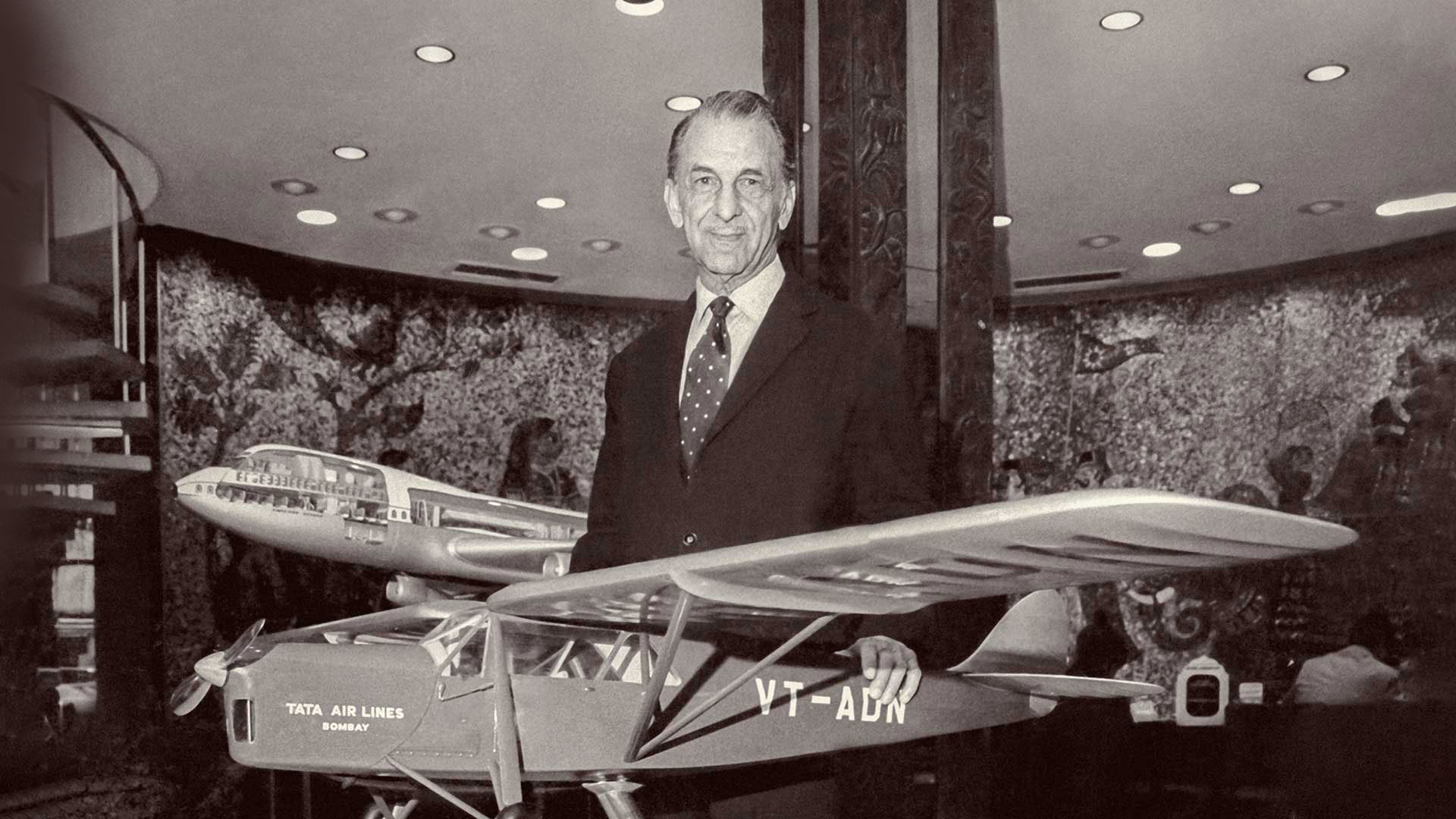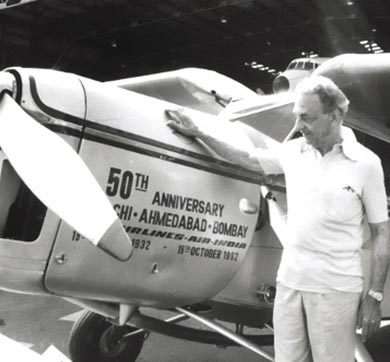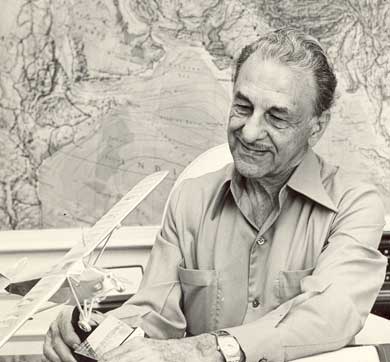July 2022 | 1457 words | 6-minute read
When JRD Tata was just twenty-five years old, a news item in the London Times caught his attention. A unique air race had just been announced by His Highness the Aga Khan, spiritual leader of the Shia Imami Ismaili Muslims, to popularise aviation and flying in India. The announcement read:
The Aga Khan has offered through the Royal Aero Club, a prize of UK Pounds 500, for the first flight from England to India, or vice-versa, by a person of Indian nationality. It must be a solo flight, completed within six weeks, from the date of starting. The prize will remain open for one year from 1st January 1930.
JRD Tata was already an avid flyer, and he had just obtained his flying licence earlier that year. Since he was the first person to have qualified in India, his licence, issued by the Aero Club of India and Burma, proudly bore the number ‘1’, He was now inspired by the Aga Khan Prize and decided to take up the challenge that had been put forth. India to England, or the reverse direction, was an arduous route that involved several days of solitary flying over the sultry deserts, swamps and marshes of Iraq and the Iraqi city of Basra, and Egypt. Given the small biplanes of those years, the race to arrive first also involved several stopovers along the way.
Three intrepid aviators
Two other flyers had decided to take up the challenge, seized by the same excitement that gripped JRD. One of them was Manmohan Singh, an enthusiastic civil engineer from Rawalpindi. The second was Aspy Merwan Engineer, a dashing young man who had obtained his flying licence at Karachi. So here was a race involving three people. The big question was who would win.
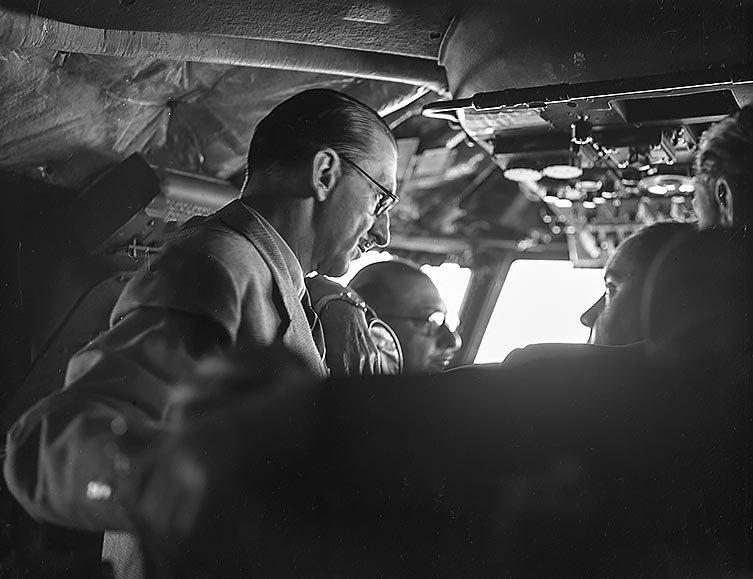
Manmohan Singh and Aspy Engineer decided to fly from England to India, whereas JRD went the other way round – he began at Karachi and aimed to reach Croydon airport in England. Manmohan Singh’s attempts were unfortunately not successful. He got lost in thick fog on a mountain road in southern Italy, and his aircraft, which he had intriguingly named ‘Miss India’, was severely damaged. He bravely persevered with the challenge and made another fresh attempt after his aircraft had been set right. This time, he had to make a forced landing in a swamp near Marseille, and while he eventually did reach India, he could not make it in the stipulated time.
Meanwhile, Aspy Engineer had taken off from England in his second-hand de Havilland Gypsy Moth biplane on 25 April 1930. He was only seventeen years old. A superb aviator, he flew very well but encountered some engine trouble over Libya at Benghazi due to faulty spark plugs. But Aspy was well-known for his mechanical and engineering skills, and so, despite these problems, he was able to safely land at the Aboukir airstrip near Alexandria in Egypt.
A superb aviator, Aspy flew very well but encountered some engine trouble over Libya at Benghazi due to faulty spark plugs.
Here, Aspy parked his plane and immediately began his hunt for spark plugs in good condition, which would enable him to fly farther. But this was not easy in this far-flung location – it could take several days for these spark plugs to reach him. Valuable time would surely be lost.
We now turn our eyes to the third competitor in the flying race, JRD Tata. Where was he? JRD had taken off from Karachi on 3 May 1930 in a Gypsy Moth G-AAGI plane. He faced significant headwinds as he flew towards Jask, a small, hot and dusty own on the coast of Iran. There he stayed overnight and then took off towards Basra in Iraq. He drifted a little and had to double back from the salt marshes north of Lingah, to reach Basra. From Basra, he flew towards Baghdad, and then towards Cairo.
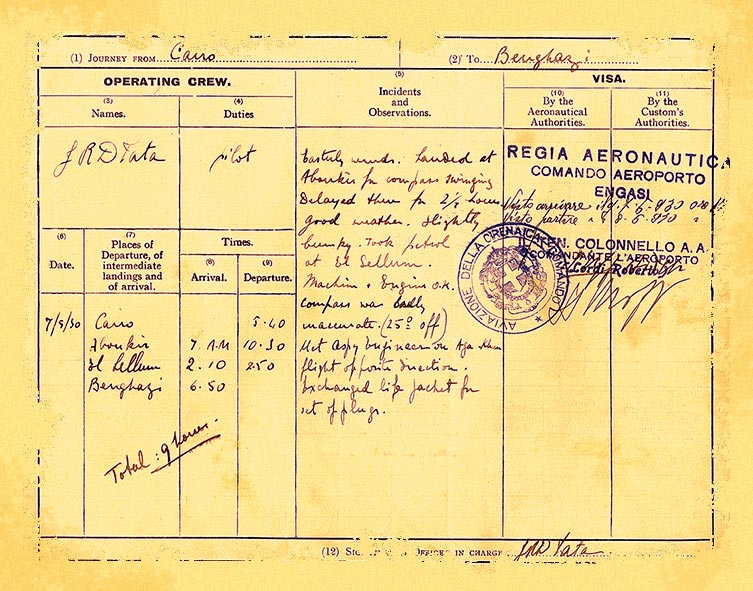
En route, his faulty compass led him to drift out again and land in an old, disused World War 1 airstrip covered in anthills at Haifa. But he recovered quickly from this error and reached Cairo, where he was redirected to land at the Aboukir airstrip, Alexandria, where Aspy Engineer had parked his plane for some time now, searching for his elusive spark plugs which would enable him to resume his race.
What happened at Aboukir that day is beautifully chronicled by JRD Tata’s biographer, RM Lala. Here is what JRD told Lala.
At Alexandria, at 7.00 am, I saw another Moth parked there and realised it must be Aspy Engineer (my competitor) … When he heard that I had landed, he came out to the aerodrome to meet me. I asked him what he was doing there. He told me he was waiting for some spare plugs, since he had not taken an extra set of them. This was not very good planning! Since mine was a four-cylinder aeroplane, and I had eight spare plugs, I gave him four of them. He was so pleased and grateful that he insisted I take something from him, and he gave me his Mae West life jacket. He had a Mae West, but no spark plugs!
So the stranded Aspy Engineer got his spark plugs from his competitor JRD, set his aircraft right, and took off towards India. JRD too got moving quickly but eventually lost further time in Naples, where he landed late evening at a military airfield. Here, because of strict army rules, he had to wait for the military commandant to permit him to take off, for which he lost four valuable hours. Thereafter, he flew uneventfully towards Rome and Paris and then the final leg from Paris to Croydon in England.
JRD Tata had lost the flying competition by just two hours and thirty minutes. The race was over.
However, by the time JRD landed in Paris, Aspy Engineer had already reached Karachi in India, and had won the Aga Khan Prize. JRD Tata had lost the flying competition by just two hours and thirty minutes. The race was over.
27 years later
But wait a moment… this is not the end of this story (as we say in India, kahaani abhi bhi baaki hai, mere dost – the story is yet to finish, my friend). Twenty-seven years later, in 1957, both men had grown significantly in their careers and lives. JRD Tata had become chairman of the Tata group and Aspy Engineer had joined the Indian Air Force, where he had risen to become Air Vice Marshal. A few years later, Aspy would go on to become the second Indian to head the Indian Air Force.
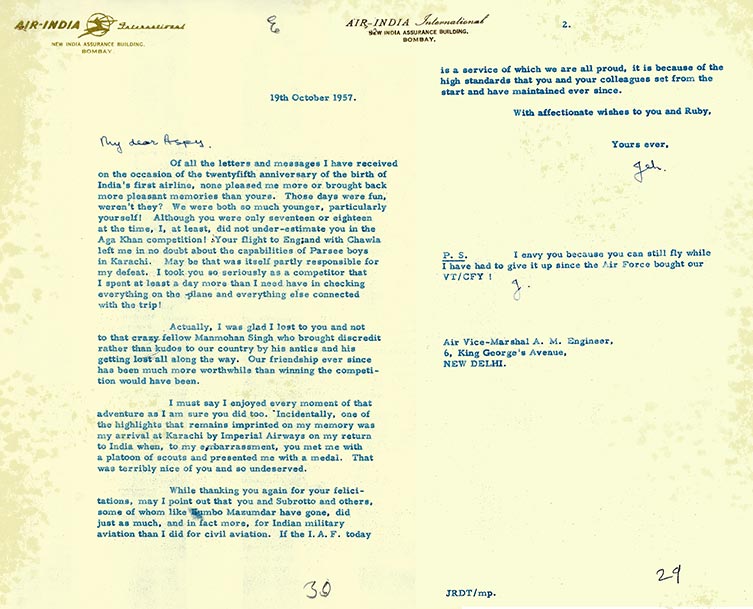
Aspy Engineer now wrote to JRD Tata to greet him on the twenty-fifth anniversary of India’s first airline which JRD had founded in 1932. JRD was greatly moved by his letter, and here is an extract from his reply to Aspy, dated 19 October 1957:
Of all the letters and messages I have received… none pleased me more or brought back more pleasant memories than yours… those days were fun, weren’t they? We were both so much younger, particularly yourself… although you were only seventeen or eighteen at that time, I at least did not underestimate you in the Aga Khan competition… I took you so seriously as a competitor that I spent at least a day more in checking everything on the plane and everything else connected with the trip.
JRD goes on to say:
Our friendship ever since has been much more worthwhile than winning the competition would have been. I must say I enjoyed every moment of that adventure as I am sure you did too.
And then JRD adds the concluding part of the story:
Incidentally, one of the highlights that remains imprinted on my memory was my arrival at Karachi by Imperial Airways, on my return to India (from England, after the race). When to my embarrassment, you met me with a platoon of scouts and presented me with a medal. That was terribly nice of you, and so undeserved.
So, Aspy Engineer actually met his competitor JRD on his return to Karachi airport and give him a ceremonial welcome with a platoon, and a special medal too, for helping him win the race. What a graceful gesture, and one that must have surely brought a smile to JRD’s face – and perhaps some tears too.
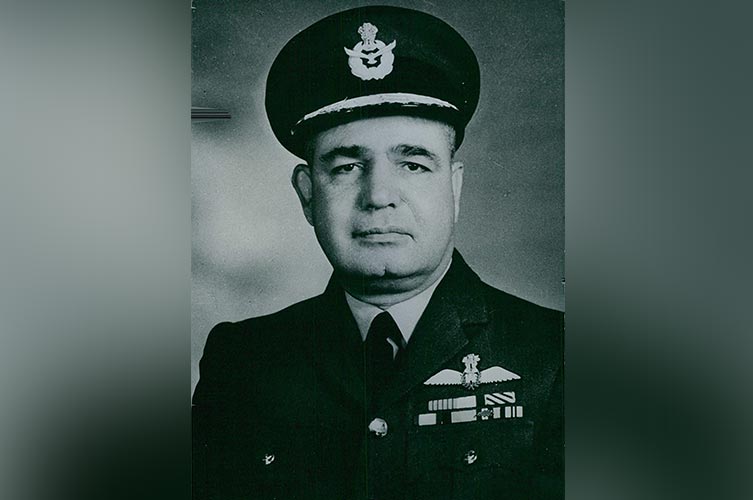
More than winning
We all run and fly so many races in our lives. Winning some of them is important to us, but is this all that matters? And is it worthwhile to win them at any cost? Or is it far more important and meaningful, to help someone, to bring a smile to someone’s face, whenever we can, along the way?
And to nurture friendships that stand the test of time, which make our lives all the more fulfilling? As we search for our own answers, perhaps we can reflect on this beautiful old story of JRD Tata and Aspy Engineer, both great men of our nation.
Excerpted from #TataStories - 40 Timeless Tales to Inspire You by Harish Bhat, Brand Custodian, Tata Sons. The excerpt also contains references to Beyond The Last Blue Mountain, the biography of JRD Tata, authored by RM Lala.
Images courtesy Tata Central Archives.




